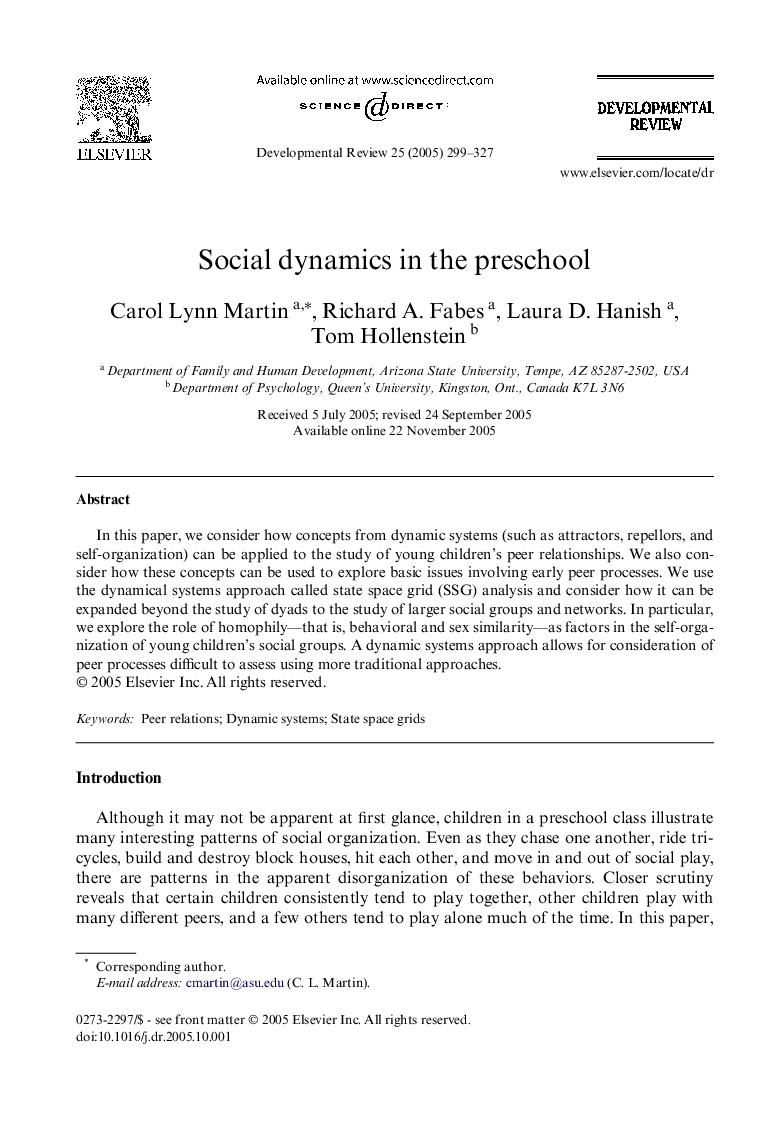| Article ID | Journal | Published Year | Pages | File Type |
|---|---|---|---|---|
| 9647692 | Developmental Review | 2005 | 29 Pages |
Abstract
In this paper, we consider how concepts from dynamic systems (such as attractors, repellors, and self-organization) can be applied to the study of young children's peer relationships. We also consider how these concepts can be used to explore basic issues involving early peer processes. We use the dynamical systems approach called state space grid (SSG) analysis and consider how it can be expanded beyond the study of dyads to the study of larger social groups and networks. In particular, we explore the role of homophily-that is, behavioral and sex similarity-as factors in the self-organization of young children's social groups. A dynamic systems approach allows for consideration of peer processes difficult to assess using more traditional approaches.
Keywords
Related Topics
Social Sciences and Humanities
Psychology
Developmental and Educational Psychology
Authors
Carol Lynn Martin, Richard A. Fabes, Laura D. Hanish, Tom Hollenstein,
